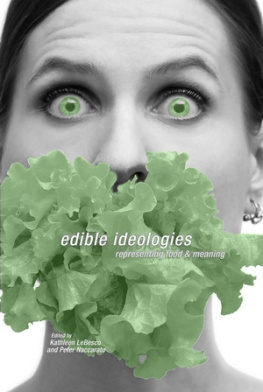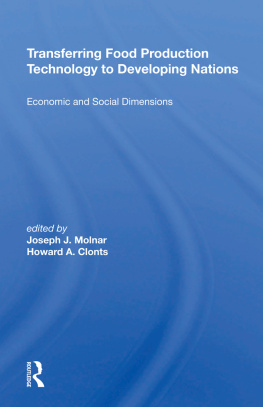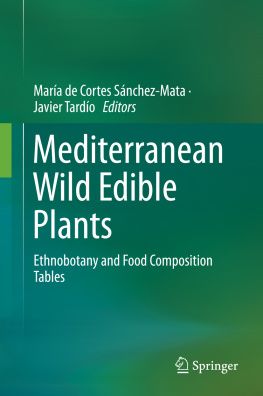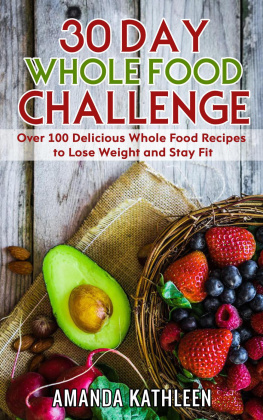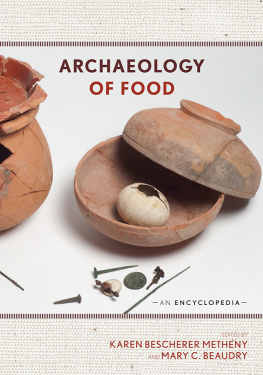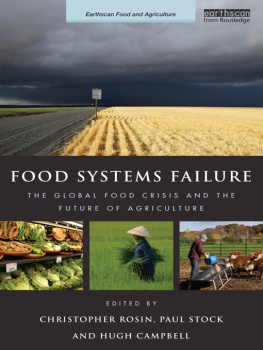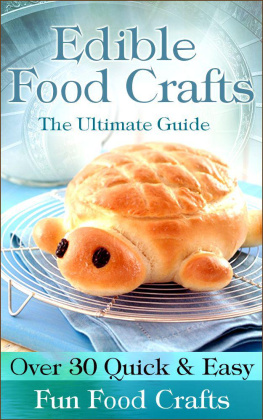Kathleen Lebesco - Edible Ideologies: Representing Food and Meaning
Here you can read online Kathleen Lebesco - Edible Ideologies: Representing Food and Meaning full text of the book (entire story) in english for free. Download pdf and epub, get meaning, cover and reviews about this ebook. year: 2008, publisher: State University of New York Press, genre: Romance novel. Description of the work, (preface) as well as reviews are available. Best literature library LitArk.com created for fans of good reading and offers a wide selection of genres:
Romance novel
Science fiction
Adventure
Detective
Science
History
Home and family
Prose
Art
Politics
Computer
Non-fiction
Religion
Business
Children
Humor
Choose a favorite category and find really read worthwhile books. Enjoy immersion in the world of imagination, feel the emotions of the characters or learn something new for yourself, make an fascinating discovery.
- Book:Edible Ideologies: Representing Food and Meaning
- Author:
- Publisher:State University of New York Press
- Genre:
- Year:2008
- Rating:3 / 5
- Favourites:Add to favourites
- Your mark:
- 60
- 1
- 2
- 3
- 4
- 5
Edible Ideologies: Representing Food and Meaning: summary, description and annotation
We offer to read an annotation, description, summary or preface (depends on what the author of the book "Edible Ideologies: Representing Food and Meaning" wrote himself). If you haven't found the necessary information about the book — write in the comments, we will try to find it.
Edible Ideologies: Representing Food and Meaning — read online for free the complete book (whole text) full work
Below is the text of the book, divided by pages. System saving the place of the last page read, allows you to conveniently read the book "Edible Ideologies: Representing Food and Meaning" online for free, without having to search again every time where you left off. Put a bookmark, and you can go to the page where you finished reading at any time.
Font size:
Interval:
Bookmark:

Edibl e Ideologie s
Edited b y Kathleen LeBesc o an d Peter Naccarat o
STATE UNIVERSITY OF NEW YORK PRES S
Published b y State University of New York Press, Alban y
2008 State University of New Yor k
All rights reserve d
Printed in the United States of Americ a
No part of this book may be used or reproduce d in any manner whatsoever without written permission . No part of this book may be stored in a retrieval syste m or transmitted in any form or by any means includin g electronic, electrostatic, magnetic tape, mechanical , photocopying, recording, or otherwise without the prio r permission in writing of the publisher .
For information, contact State University of New York Press, Albany, NY www.sunypress.edu
Production by Kelli W. LeRou x Marketing by Anne M. Valentin e
Photo/illustration credits: Figure 9.2reproduced with the permission o f Norman Rockwell Family Agency, Inc.; Figure 9.3reproduced with th e permission of Trans High Corporatio n
Edible ideologies : representing food and meaning / edited by: Kathleen LeBesco, Peter Naccarato.
p. cm . Includes bibliographical references and index . ISBN 978-0-7914-7287-3 (hardcover : alk. paper) ISB N
978-0-7914-7288-0 (pbk. : alk. paper) 1. FoodHistory. 2. FoodSocial aspects. I. LeBesco, Kathleen, 1970 II. Naccarato, Peter, 1970
TX353.E35 200 641.3dc2 200700775
10987654321
To Fede Mauro Naccarato and Brooks LaRose , our grandparents, perched on whose windowsill s and countertops we learned to love foo d
One cannot think well, love well, sleep well, if one has not dined well.
Virginia Woolf, A Room of Ones Own
| List of Illustrations | xi | |
|---|---|---|
| Acknowledgments | xiii | |
| Introduction Kathleen LeBesco and Peter Naccarato | ||
| CHAPTER 1 | Men and Menus: Dickens and the Rise of the Ordinary English Gentleman Annette Cozzi | |
| CHAPTER 2 | Food Will Win the War: Food and Social Control in World War I Propaganda Celia M. Kingsbury | |
| CHAPTER 3 | Cooking In Memorys Kitchen : Re-Presenting Recipes, Remembering the Holocaust Marie I. Drews | |
| CHAPTER 4 | More than one million mothers know its the REAL thing: The Rosenbergs, Jell-O, Old-Fashioned Gefilte Fish, and 1950s America Nathan Abrams | |
| CHAPTER 5 | Cooking the Books: Jewish Cuisine and the Commodification of Difference Eric Mason |
i x Content s
CHAPTER 6 Typisch Deutsch : Culinary Tourism and the Presentation
| of German Food in English-Language Travel Guides Lynne Fallwell | ||
|---|---|---|
| CHAPTER 7 | The Embodied Rhetoric of Health from Farm Fields to Salad Bowls Jean P. Retzinger | |
| CHAPTER 8 | Consuming the Other: Packaged Representations of Foreignness in Presidents Choice Charlene Elliott | |
| CHAPTER 9 | From Romance to PMS: Images of Women and Chocolate in Twentieth-Century America Kathleen Banks Nutter | |
| CHAPTER 10 | Julia Child, Martha Stewart, and the Rise of Culinary Capital Kathleen LeBesco and Peter Naccarato | |
| Contributors | ||
| Index |
FIGURE 7.1 Wendys Expectations Ad 158 FIGURE 7.2 McDonalds Fresh Lettuce Ad 159 FIGURE 7.3 Applebees Little Black Dress Ad 164 FIGURE 7.4a Burger King Pouch Ad 165 FIGURE 7.4b Burger King Pouch Ad 166 FIGURE 7.5 McDonalds Out There Ad 168 FIGURE 7.6 McDonalds Party Ad 169 FIGURE 9.1 NYLO Chocolates, 1913 203 FIGURE 9.2 Romance Chocolates, 1923 206 FIGURE 9.3 High Times FIGURE 9.4 PMS Candy Bar Wrapper, 2003 215
x i
We must beg to differ with the sentiment behind the adage that too many cooks spoil the broth. In fact, we have a great many people to thank for stirring the pot.
Our nine contributors worked diligently to provide the raw material for this collection, flexibly reworking their pieces under tight deadlines with great skill.
Partial funding for the project was generously granted by the late Margaret Sokol, a vibrant longtime supporter of faculty development.
A number of faculty, staff, and students at Marymount Manhattan College were supportive of this endeavor. In particular, we appreciate conversations with our undergraduate students in Edible Ideologies: The Politics of Food both in fall 2002 and spring 2006. Henry Blanke and Tammy Wofsey assisted with a never-ending series of requests for interlibrary loans. Ryan Cunningham provided heroic administrative support. Kelsey Crittenden, Louise Mattarelliano, Margaret Westby, and Laura Young served capably as editorial/research assistants. David Linton and Dawn Weber championed funding for the project through adminis trative channels.
We first dreamed up the project after attending the Eat, Drink and Be Merry: Food and Drink in the 21st Century conference at the Ams terdam School of Cultural Analysis in 2002. Subsequent food studies-related presentations at the annual meeting of the Popular Culture Association in Atlanta (2006), the Politics and/in Aesthetics conference at the University of Veliko Turnovo, Bulgaria (2005), and the Interna tional Communication Association annual conference in San Diego (2003) cemented our knowledge base and our commitment. We thank
xii i Acknowledgment s
the many scholars who provided fine feedback on our ideas at these varied venues.
At SUNY Press, we thank Larin McLaughlin for recognizing the potential of this project and shepherding it to fruition, and Kelli Williams LeRoux for guidance during the production phase. The comments of two anonymous reviewers also shaped the collection, and to them we express gratitude.
Our families and friends have also been enthusiastic about the project. (After some of our earlier research topics, food is a relatively easy sell!) Grazie to Peg Leahy, Kurt LeBesco, Pauline Franz, John Shields, Pete Naccarato and Laura Naccarato.
When he buys an item of food, consumes it, or serves it, modern man
does not manipulate a simple object in a purely transitive fashion; this
item of food sums up and transmits a situation; it constitutes an infor
mation; it signifies.
Roland Barthes, Mythologies
As Roland Barthes suggests, buying, consuming, and serving food are acts of signification through which people construct and sustain their identi ties. At the same time these actsand the broad range of cultural repre sentations that support and are supported by themalso serve as vehicles through which ideological expectations about those very identities are cir culated, enforced, and transgressed. While on the surface food culture offers its consumers education, entertainment, and escape, it implicitly invites them not only to appreciate the beauty and pleasure of well-prepared food, but also to consume the subtle messages embedded within these representations. However, food representations are not simply tools of seduction or devices for the exercise of repressive powerthey are also occasions for resistance that provide opportunities for pleasure.
Font size:
Interval:
Bookmark:
Similar books «Edible Ideologies: Representing Food and Meaning»
Look at similar books to Edible Ideologies: Representing Food and Meaning. We have selected literature similar in name and meaning in the hope of providing readers with more options to find new, interesting, not yet read works.
Discussion, reviews of the book Edible Ideologies: Representing Food and Meaning and just readers' own opinions. Leave your comments, write what you think about the work, its meaning or the main characters. Specify what exactly you liked and what you didn't like, and why you think so.

